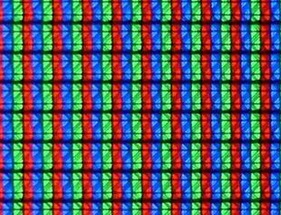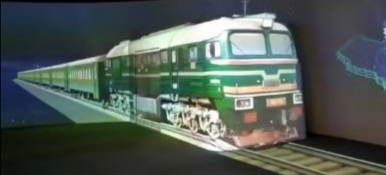In recent years, in large-scale shopping malls or activities, we always see the figure of "LED fan". Its appearance is similar to the fan, but it can display various patterns when rotating, and some can display dynamic 3D patterns, which is very cool. Every time we see it, we can always make people stop and watch it, which plays a very good role in publicity and promotion. So how do LED fans display patterns?
Strictly speaking, this so-called "fan" is just a vivid way to call it. In fact, it is a kind of "rotating LED light bar", and its professional name is holographic 3D smart glare screen. After power on, the "fan blade" starts to rotate, which can present a 3D image at the same time, cool and lifelike. At the same time, according to the size and color of the pattern, the LED fan can well hide its leaves, because there is no frame and no fixed screen, so the dynamic picture is like floating in the air, very realistic.
The 3D smart screen not only uses the hardware of rotating LED, but also uses the visual persistence of human eyes. For the hardware equipment of rotating LED, simply speaking, it is to calculate the change frequency of LED light according to the rotation speed of "fan blade". When different LED lights are lit at different times, different patterns will appear. The so-called visual persistence refers to that when the human eye is observing the scene, the light signal is transmitted to the brain nerve, which takes a short period of time. After the end of the role of light, the visual image does not disappear immediately, and the human eye can still maintain its image for about 0.1-0.4 seconds. This kind of residual vision is called "afterimage". The visual phenomenon is called "visual persistence", and the single product can be unique. Vertical display effect can also display the overall effect in combination.
3D holographic fan screen application: shopping malls, brand stores, stores, airports, etc. A good choice to reflect brand effect and brand grade
Principle of 3D holographic screen: Generally speaking, one or more strings of LED lights are arranged on the fan blades. Here, it is assumed that there are 20 LED lights, which are numbered 1-20 at a time from the axis to the edge of the fan blades. In order to explain the principle briefly, we assume that when the fan speed is 60 laps per minute (in reality, the speed is much higher), the human eye will have visual persistence. Let's assume that the LED light is 0 degrees above the fan in 0 seconds. If you want to display the effect of 6:00 on the fan, the minute hand needs to point to the top and the hour hand needs to point to the bottom. It is necessary to turn on the number 1-20 to display minute hand in 0 second, turn on the number 1-10 to display hour hand in 0.5 second, turn on the number 1-20 to display minute hand in 1 second, turn on the number 1-10 to display hour hand in 1.5 second, and so on, so that the human eye will receive a complete picture of the clock at 6:00. For complex patterns, LED fans will have more complex structure and programming equipment. Through the combination of LED light bar rotation and visual persistence, people will see a dynamic 3D picture of the rotating LED fan.
3D holographic fan screen structure: the screen body mainly has light bars and, according to different ones, some have two. Add rotary motor, built-in 3D holographic system and information receiving system.
At present, the main application of 3D smart screen is advertising. Because of its editability and realistic display effect, it is believed that in the near future, it will be applied in more fields.
3D Holographic Advertising LED Fan Display Advertising Led Display,3D Holographic Advertising Led Fan Display,Indoor Advertising Led Display,3D Holographic Led Fan Display Shenzhen Vision Display Technology Co,.LTD , https://www.ledvdi.com Two major LCD panel giants in China have issued quarterly reports in recent days. The report shows that China Star Optoelectronics achieved sales revenue of 3.363 billion yuan and net profit of 408 million yuan, and its profit exceeded the 2012 full year (315 million yuan); BOE achieved a net profit of 286 million yuan, and its profit also exceeded that of 2012 (2.58 billion yuan).
Two major LCD panel giants in China have issued quarterly reports in recent days. The report shows that China Star Optoelectronics achieved sales revenue of 3.363 billion yuan and net profit of 408 million yuan, and its profit exceeded the 2012 full year (315 million yuan); BOE achieved a net profit of 286 million yuan, and its profit also exceeded that of 2012 (2.58 billion yuan).
However, the prosperity of the surface has not covered the deep crisis in the panel industry. Observers pointed out: At present, the exciting performance of Chinese LCD panel companies is actually "returning to the light," and it is expected that the glory of the local LCD panel industry will officially end in 2015.
From a global perspective, the LCD panel industry has turned around since 2011 and continues to this day, ending its 8 years of glory. At present, the global LCD panel companies have generally fallen. This is not accidental. Since 2012, OLED, a new display technology that is considered as the final replacement product for LCDs and LED LCD TVs, has begun to enter the public view. Since 2013, with Samsung and LG as the representatives of international color TV giants, they have further accelerated the OLED marketization, claiming that they will launch large-screen products during the year, especially LG. It is reported that LG has sold large-screen OLEDs in Korea's domestic and UK markets. In addition, LG will hold an OLED China conference in May to announce that OLED has officially entered the Chinese market. With the advent of high-profile OLEDs, LCDs and LEDs have finally entered the down-channel of their lives. LCDs and LEDs are ushering in its glory. Today's LCD is similar to CRT 10 years ago, and today's OLED is similar to LCD 10 years ago.
Today, the surface of China's LCD panel industry is infinite, but in reality there are many crises.
Why did Chinese LCD panel companies suddenly make money?
Interestingly, local LCD panel companies realized profitability when Korean, Japanese and Taiwanese panel companies were in trouble. In the past six or seven years, foreign-funded LCD panel companies have earned enough money and local LCD panel companies have lost a mess, a typical statement is: BOE "five years lost five."
Why is that?
In fact, there is a great deal of mystery.
All sorts of signs show that today's color TV industry is once again standing in front of an old threshold of new and old alternatives. The advantages of OLEDs that have achieved large-screen, large-scale manufacturing, and increasingly mature technologies are obvious. In addition to the further improvement in the definition, it is because it greatly extends the television. The form of the product makes it impossible to become a television product to become a TV. This has brought about a major change in the form and presence of TV products. This is undoubtedly the biggest revolution in the history of television industry development.
Because of this, OLED has placed the dream of almost all color TV companies. In the eyes of South Korea and Japan TV companies, whoever seizes the OLED image highland will be the dominant player in this era. As a result, Korean and Japanese color TV companies and Taiwanese panel companies have transformed their production of OLED panels. Under this background, the global supply of LCD panels began to decline. As a result, color TV companies' purchases of Chinese panels increased. In addition, the state has adopted protective measures (increasing tariffs) on the local LCD panel industry, and local panel companies have begun to “have a happy life for Zhang Daminâ€. However, behind the happiness is uneasy, how long can such happiness last? It is a big question mark.
More and more people tend to think that the profitability of today's LCD panel companies is actually a return to reality. Because there is a greater crisis lurking under the glory.
China's color TV companies
A few days ago, an LCD panel company claimed to prepare for another 8.5 generation production line, and its confidence came from the first quarter of 2013, the panel realized profits.
However, there is almost no sound for it. Some people say that the local LCD panel companies can profit for how long it has nothing to do with their own, and Han and Japan companies to promote OLED efforts.
If so, will China's panel companies invest heavily in investment?
Regrettably, most Chinese color TV companies do not have a clear understanding of the megatrends and have not made substantive preparations so far. What is particularly disturbing is that many companies even believe that the good days of LCD and LED LCD TVs are long and they are reluctant to face the reality that OLED will soon break out. This scene, reminiscent of a Chinese TV company CEO said eight years ago: "The good days of CRT TV is still very long, the LCD era has not yet arrived." Is China's color TV company ready to fall twice in the same place?
I would like to know who will become the first color TV company in China to launch OLED? 

